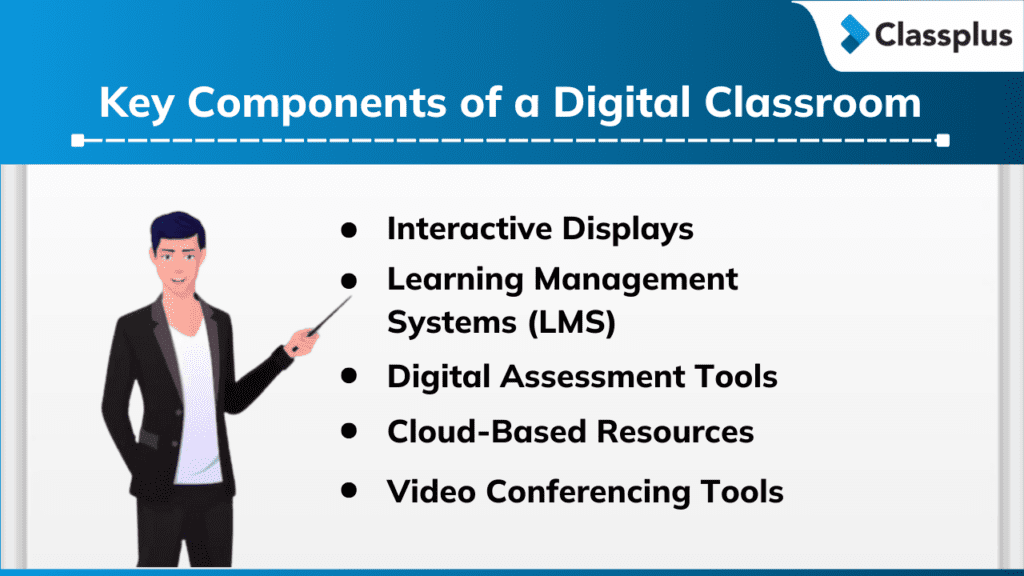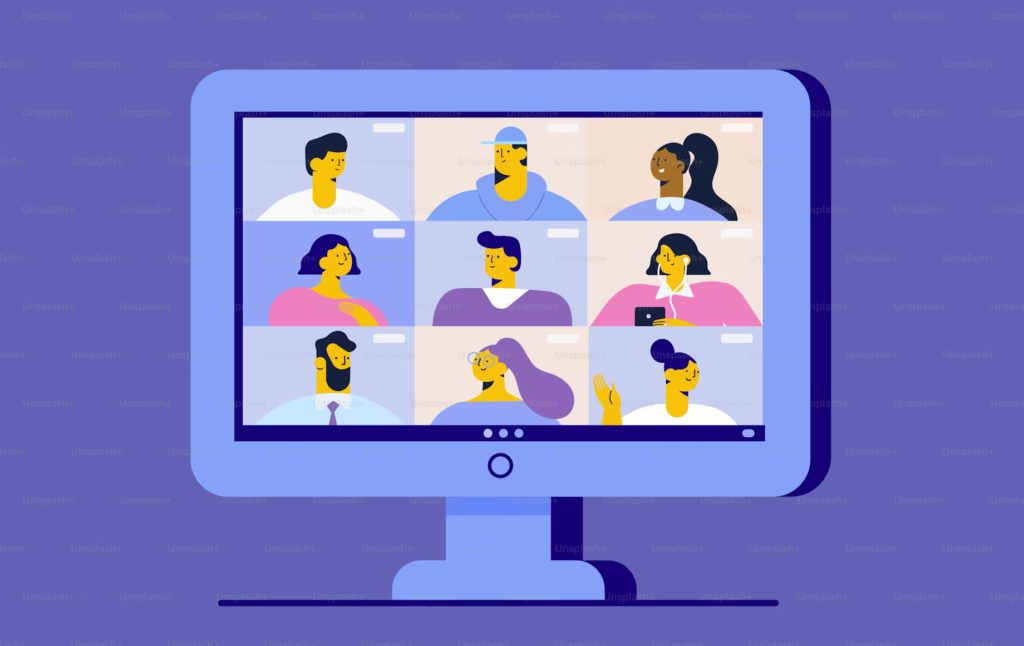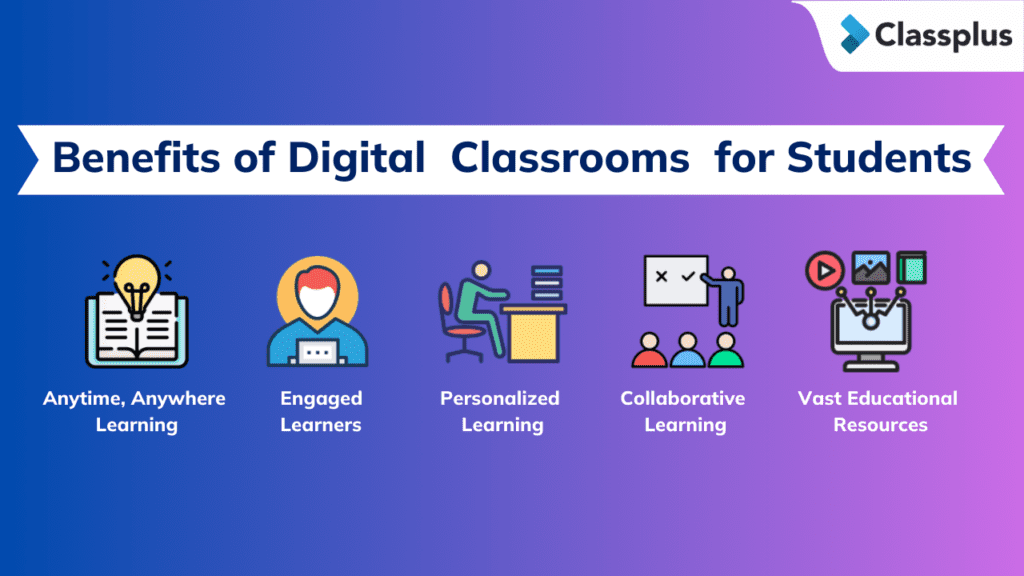Digital classrooms are the modern version of traditional classrooms that incorporates technology as a core part of the learning process. With a digital classroom, teachers take learning experiences outside the limited content of textbooks and enrich practical learning experiences using tools like interactive whiteboards, tablets, laptops and other devices. Students can learn through multimedia like videos, animations and simulations instead of just books and lectures.
Digital classrooms make learning more engaging and fun for students of various learning styles. The teacher’s role transforms from being a traditional instructor to a facilitator who can guide students through self-paced exploration and discovery. Students become more active participants in the learning process instead of passive listeners. They gain technology skills while also developing critical thinking, creativity and collaboration abilities from project-based activities.
In this article, let us find out everything you need to know about Digital Classrooms including steps to create your very own digital learning classroom!
What is a Digital Classroom?
A digital classroom is a learning environment that integrates technology in the classroom to enhance the educational experience. Think computers, tablets, interactive whiteboards, and educational software, all working together to create a dynamic and stimulating space for students. But it’s not just about the gadgets – it’s about utilizing tools like computers, tablets, interactive whiteboards, and educational software to create a dynamic and stimulating space for students to learn and collaborate. A well-designed digital classroom fosters digital collaboration in classrooms, where students can work together virtually, share ideas, and learn from each other.
Are Digital Classrooms the Future of Online Learning?
The potential of digital classrooms is vast, but it’s important to remember that technology is a tool, not a replacement for traditional teaching methods. So, the question remains –
- How can we harness the power of technology to create a thriving digital learning environment for all students?
- With so much information available at their fingertips, will students get distracted or overwhelmed?
- How can teachers optimally blend in-person teaching with digital tools?
- What challenges do schools need to overcome for successful implementation of digital classrooms?
- While digital classrooms aim to prepare students for a tech-driven future, will they still develop human contact and “real-world” problem-solving skills?
Evolving digital classrooms need constant innovation to maximize the benefits of technology for effective teaching and learning.
Are you an online courses creator? Get in touch with experts at Classplus to enhance online learning by building your very own digital classrooms now!
Digital Classrooms vs. Traditional Classrooms
The main difference between digital and traditional classrooms is the place where teachers and students engage in the learning process. While traditional classrooms provide face-to-face interaction and teacher guidance, digital classrooms offer a new dimension of learning by introducing technology in the student-teacher dynamics. Let us look at the key differences between traditional vs. digital classrooms –
| Feature | Digital Classroom | Traditional Classroom |
| Learning Environment | Focuses on technology integration. Creates a dynamic and interactive space. | Relies on physical resources like textbooks and whiteboards. Offers a structured learning environment. |
| Engagement | Utilizes interactive elements like simulations, games, and polls to keep students actively involved. | Primarily teacher-centered with lectures and discussions. Student participation may vary. |
| Accessibility | Offers learning materials and resources online, allowing students to learn at their own pace and revisit concepts anytime, anywhere. | Relies on physical resources that are limited to classroom hours. |
| Differentiation | Teachers can leverage technology to tailor lessons to individual learning styles using a variety of digital tools and resources. | Catering to individual needs can be challenging with limited resources. |
| Collaboration | Students can work together virtually on projects and share ideas, fostering teamwork and communication across geographical boundaries. | Collaboration primarily happens in-person during group activities or discussions. |
| Information Access | Provides access to a vast library of information beyond textbooks through online resources and educational platforms. | Relies on textbooks and teacher-provided materials as the primary source of information. |
| Global Interaction | Enables virtual field trips, guest lectures, and real-time communication with students and experts worldwide. | Limited opportunities for interaction beyond the physical classroom walls. |
| Role of the Teacher | Shifts from a knowledge transmitter to a facilitator and guide, guiding students through digital resources and activities. | Teacher acts as the primary source of information, delivering lectures and leading discussions. |
5 Must Have Features of a Digital Classroom
Digital classrooms extend learning far beyond the confines of textbooks and lectures. By integrating technology strategically, educators can create a dynamic and engaging environment that fosters deeper understanding and collaboration. Below are 5 key features of a well-equipped digital classroom –

1. Interactive Displays
Imagine a giant touchscreen replacing the traditional whiteboard. Interactive displays allow teachers to create dynamic presentations with simulations, animations, and real-time polls.
Students can actively participate by annotating the screen, solving problems collaboratively, and showcasing their work in a visually engaging way.
2. Learning Management Systems (LMS)
Think of an LMS as a central hub for your digital classroom. It provides a secure platform for students to access course materials, submit assignments, take quizzes, and track their progress. Teachers can easily share resources, communicate with students individually or as a group, and provide personalized feedback within the LMS. For instance, a history teacher can upload primary source documents, interactive timelines, and discussion forums all within the LMS, promoting in-depth exploration of historical events.
3. Digital Assessment Tools
Digital assessments go beyond traditional pen-and-paper tests. They offer a variety of interactive exercises, simulations, and games that assess student learning in a more engaging and insightful way. Imagine a science class where students participate in a virtual dissection simulation or a math class where students solve problems through an interactive game. These digital assessments provide valuable data on student understanding, allowing teachers to identify areas needing improvement and personalize instruction accordingly.
4. Cloud-Based Resources
Gone are the days of bulky textbooks and limited access to learning materials. Cloud storage allows students to securely access course materials, assignments, and even their own work from any device with an internet connection. This fosters anytime, anywhere learning, allowing students to review concepts outside of class hours or collaborate on projects remotely. Imagine a student working on a group project about climate change. They can access research articles, data sets, and collaborative documents stored in the cloud, allowing them to work together seamlessly even if they are not physically in the same location.
5. Video Conferencing Tools
Video conferencing tools smash geographical barriers and open a world of possibilities for student learning. Imagine a virtual field trip to the Great Barrier Reef led by a marine biologist, or a live Q&A session with a renowned author discussing their latest book. These tools allow students to connect with experts, participate in global discussions, and experience diverse perspectives, all within the confines of the classroom. For instance, a literature class can virtually connect with a pen pal class in another country, fostering cultural exchange and collaboration on writing projects.
Digital Classroom Equipment List
A digital classroom should have the following equipments –
- Interactive Whiteboard
- Learning Management System
- Projector
- Digital Student Devices
- Classroom Furniture
- Lecture Recording System
- Presentation Remote
- Classroom Background
- Laptops
- Classroom Management Tools
- Education Software or Applications
- HD Camera
- Microphones
- Smartboard
- Tablets
- Smart Projection Systems
How to Create a Digital Classroom?
Digital Classrooms are the new trend in online learning and as an online course creator, there’s reason enough for you to step in! But how do you navigate the world of educational technology and create a space that fosters engagement, collaboration, and student success? Here’s a step-by-step guide to equip you with the tools and strategies to build your thriving digital classroom –
Step 1: Chart Your Course Goals & Needs
The first step to create digital classrooms should start with a clear WHAT! Clearly define your digital classroom goals by asking the following questions –
- What do you hope to achieve with technology in your classroom?
- Is it boosting engagement, personalizing learning, or fostering collaboration?
Once you define your goals, consider your students’ needs and the curriculum you’ll be using.
For example, are you a history teacher aiming to make the American Revolution come alive? Integrating virtual reality simulations of key battles can be a powerful tool!
Step 2: Choosing the Right Tech Tools
The world of educational technology is vast! Explore a variety of options like educational software, apps, and digital platforms. Look for features that align with your goals, like content creation tools for interactive presentations, assessment features for personalized learning, or collaboration features for group projects. Ask yourself –
- Do you have students with diverse learning styles? There are many apps and programs designed to cater to visual, auditory, and kinesthetic learners!
- What is the average student age, learning styles, and budget of your digital classroom?
Consider these factors when researching tools and platforms.
Also read – How to Take Live Classes?
Step 3: Equipping Your Digital Classrooms
Depending on your budget, you can choose from a range of equipment to enhance your digital classroom. Interactive whiteboards for instance, can transform your presentations into engaging touch-enabled experiences. If you’re feeling adventurous, consider virtual reality headsets to take students on immersive learning journeys! Remember, effective digital classrooms aren’t defined by fancy gadgets, but by the strategic use of technology to improve online learning.
| Did You Know? Studies have shown that interactive whiteboards can increase student engagement by up to 40%! |
Step 4: Teacher Training
The most important element in any classroom is the Teacher! Even the most amazing technology will need a skilled teacher to unlock its full potential. Don’t be afraid to invest in teacher training and learning! Many online resources and professional development programs can equip you with the skills to seamlessly integrate technology into your lessons.
Step 5: Set the Ground Rules!
Technology is a powerful tool, but like any tool, it needs clear guidelines for responsible use. Establish expectations for appropriate online behavior, “netiquette” as it’s called, and set clear boundaries for technology use during class time as part of your digital classroom management strategy.

Read more Tips to Get Students Attention in Digital Classrooms to enhance learning!
Step 6: Curating High-Quality Resources
The internet is a treasure trove of information, but not all resources are created equal. Carefully curate high-quality websites, educational videos, and online simulations that align with your curriculum and learning objectives. Don’t be afraid to get creative! Use interactive tools to design your own live quizzes, polls, or even virtual tours related to your subject.
Step 7: Embrace Experimentation
Don’t be afraid to experiment and try new things! The beauty of a digital classroom is its flexibility. Start small by incorporating a new digital tool into a single lesson or activity. Observe how your students respond, identify areas for improvement, and refine your approach based on students’ and your own feedback. Remember, the key is to experiment, learn, and adapt to create a digital learning experience that works best for you and your students.
Check out some Ideas to Go Paperless in the Classroom!
Advantages & Disadvantages of Digital Classrooms
Digital classrooms offer a dynamic and engaging learning experience, but like any educational tool, they come with both advantages and disadvantages. Imagine a classroom where students can collaborate on a climate change project with peers across the globe. Sounds exciting, right? However, we also need to consider potential drawbacks like digital distractions or limitations due to unequal access to technology. Let’s weigh the pros and cons of digital classrooms to create a balanced approach to digital learning –
| Digital Classroom Advantages | Digital Classroom Disadvantages |
| Engaged Learning: Interactive elements, simulations, and gamified activities can boost student motivation and participation. | Tech Dependence: Overreliance on technology can hinder the development of critical thinking and traditional learning skills. |
| Personalized Learning: Digital tools allow teachers to cater to individual learning styles and pace, providing targeted support and resources. | Digital Divide: Unequal access to technology and reliable internet can create an achievement gap between students. |
| Enhanced Collaboration: Students can work together on projects virtually, fostering communication, teamwork, and problem-solving skills. | Distractions & Misuse: Digital devices can become distractions if not managed properly, impacting focus and learning outcomes. |
| Global Access: Digital classrooms connect students with experts and peers worldwide, enriching their learning experience with diverse perspectives. | Tech Integration Challenges: Teachers may require training and support to effectively integrate technology into their lessons. |
| 24/7 Learning: Cloud-based resources allow students to access materials and revisit concepts anytime, anywhere, promoting independent learning. | Screen Time Concerns: Excessive screen time can lead to eye strain, social isolation, and potential health issues. |
Also read – Importance of Digital Collaboration in Classrooms
Benefits of Digital Classrooms for Students
Digital classrooms transform learning from a static experience to an interactive and collaborative learning space! Students become active participants, not just passive listeners.

Here’s how digital classrooms are beneficial for students –
- Interactive elements, simulations, and games make learning fun and keep students actively involved, making them engaged learners.
- Digital tools allow teachers to tailor lessons to individual learning styles and pace, ensuring everyone thrives through a personalized path.
- Students can work together on projects and collaborate virtually, fostering communication, teamwork, and problem-solving skills.
- Digital resources provide a vast library of information beyond textbooks, opening doors to global exploration.
- Cloud-based resources allow students to revisit concepts and access materials at their convenience, promoting Anytime, Anywhere Learning!
Tips to Enhance Learning in Digital Classrooms
Keeping your digital classroom engaging and effective requires going beyond just the tech. Here are some tips to transform your digital classroom into a thriving environment for learning –
- Introduce Variety – Integrate a mix of activities like interactive lessons, simulations, discussions, and hands-on projects to cater to different learning styles. Imagine a science lesson where students design their own virtual planet after exploring real-world data.
- Set Clear Expectations – Establish guidelines for appropriate technology use to minimize distractions and maximize learning outcomes. This could involve designated times for focused work and clear rules on online communication etiquette.
- Promote Collaboration – Encourage students to work together on projects virtually, fostering teamwork, communication, and problem-solving skills. This could involve collaborative brainstorming sessions on online whiteboards or creating multimedia presentations together.
- Utilize Feedback & Assessment – Utilize digital tools for formative and summative assessments, providing students with personalized feedback to track their progress. Online quizzes with instant results or peer review platforms can offer valuable insights for both students and teachers.
- Balance Screen Time – Schedule breaks and encourage alternative learning activities to prevent screen fatigue and promote a healthy learning environment. Short breaks for movement or discussions can help students recharge and refocus.
Digital Classroom FAQs
A digital classroom refers to a traditional classroom that leverages technology tools to enhance learning. Devices like laptops and tablets along with internet connectivity are used.
The main difference is that a digital classroom can include both in-person and online elements, while an online classroom is entirely virtual with no physical space.
The most important role of a teacher in a digital classroom is to guide and facilitate learning through appropriate use of technologies. They curate online content and help students navigate various digital tools and resources.
The purpose is to improve the classroom learning experience by making it more engaging, collaborative and personalized through use of multimedia, cloud-based apps and connectivity with peers globally.
To manage a digital classroom, a teacher sets up rules and norms for appropriate tech use, monitors students’ online activity and interaction, ensures all have access to required resources, provides technical support and evaluates effectiveness of digital tools used.



